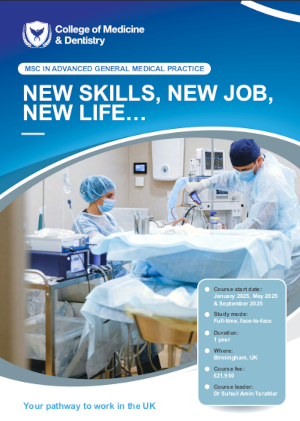Serum and Salivary Glucose Levels in Diabetes Mellitus: A Review
DOI:
https://doi.org/10.60787/njgp.v15i2.124Keywords:
systemic diseases, saliva, diagnostics, Diabetes mellitusAbstract
The salivary fluid has an old history of study, but its physiological importance has only been recognized recently. In the past 50 years, the pace of salivary research has accelerated with the advent of new techniques that illuminated the biochemical and physicochemical properties of saliva. The interest in saliva increased, further, with the finding that saliva is filled with hundreds of components that might serve to detect systemic diseases and/or act as an evidence of exposure to various harmful substances as well as provide biomarkers of health and disease. The role of saliva in the diagnosis as well as monitoring of glycemic control has, also, been attracting attention of clinical researchers in recent times although results have been conflicting. To conclude, saliva is a whole, diverse fluid, that serves various purposes discussed in detail in the literature. The recent introduction of molecular biology opens up, once again, new vistas and a new search of the role of salivary fluid as a potential diagnostic tool which has an added advantage of being noninvasive. This review presents such insight into the possible use of salivary fluid for the monitoring of serum glucose levels and in the detection of glycemic control in diabetic patients.
Downloads
References
Falcao DP, da Mota LMH, Pires AL, Bezerra ACB. Sialometry: Aspects of clinical interest. Rev Bras Reumatol 2013;53:525-31.
Pinka R, Simek J, Vondrakova J, Faber E, Michl P, Pazdera J, et al.Saliva as a diagnostic medium. Biomed Pap Med Fac Univ Palacky Olomouc Czech Repub 2009;153:103-10.
Sandhu SV, Bhandari R, Gupta S, Puri A. Salivary diagnostics: An insight. Indian J Dent Sci 2011;3:19-23.
Malamed Stanley F. Medical Emergencies in the Dental Office. 6th ed.. Missouri: Mosby; 2000.
Bartoli E, Fra GP, Carnevale Schianca GP. The oral glucose tolerance test (OGTT) revisited. Eur J Intern Med 2011;22:8-12.
Reinauer H, Home PD, Kanagasabapathy AS, Heuck CC. Laboratory Diagnosis and Monitoring of Diabetes Mellitus. Geneva: WHO; 2002.
American Diabetes Mellitus Association. Standards of medical care for patients with Diabetes Mellitus. Diab Mellitus Care 2002;25:213-29.
Rohlfing CL, WieDiabetes Mellituseyer HM, Little RR, England JD, Tennill A, Goldstein DE. Defining the relationship between plasma glucose and HbA(1c): Analysis of glucose profiles and HbA(1c) in the Diabetes Mellitus Control and Complications Trial. Diab Mellitus Care 2002;25:275-8.
Goldstein DE, Little RR, Lorenz RA, Malone JI, Nathan DM, Peterson CM. American Diabetes Mellitus Association. Tests of glycemia in diabetes mellitus. Diab Mellitus Care 2003;26:S106-8.
ReynoldsTM, SmellieWS, Twomey PJ. Glycated haemoglobin (HbA1c) monitoring. Brit Med J 2006;333:586-8.
Frier BM, Fisher M. Diabetes mellitus. In: Boon NA, Colledge NR, Walker BR, editors. Davidson’s Principles and Practice of Medicine. 20th ed. Philadelphia: Churchill Livingstone; 2006. p. 813-7.
Tura A, Maran A, Pacini G. Non-invasive glucose monitoring: Assessment of technologies and devices according to quantitative criteria. Diab Mellitus Res Clin Prac 2007;77:16-40.
Forbat LN, Collins RE, Maskell GK, Sonksen PH. Glucose concentrations in parotid fluid and venous blood of patients attending a diabetic clinic. J Royal Soc Med 1981;74:725-8.
Borg A, Birkhed D. Secretion of glucose in human parotid saliva after carbohydrate intake. Scand J Dent Res 1988;96:551-6.
Darwazeh AM, MacFarlane TW, McCuish A, Lamey PJ. Mixed salivary glucose levels and candidal carriage in patients with diabetes mellitus. J Oral Pathol Med 1991;20:280-3.
Belazi MA, Galli-Tsinopoulou A, Drakoulakos D, Fleva A, Papanayiotou PH. Salivary alterations in insulin-dependent diabetes mellitus. Int J Pediatr Dent 1998;8:29-33.
Amer S, Yousuf M, Siddiqui PQ, Alam J. Salivary glucose concentrations in patients with diabetes mellitus: A minimally invasive technique for monitoring blood glucose levels. Pak J Pharma Sci 2001;14:33-7.
Lopez ME. Salivary characteristics of diabetic children. Braz Dent J 2003;14:26-31.
Aydin S. A comparison of ghrelin, glucose, alpha-amylase and protein levels in saliva from diabetics. J Biochem Mol Biol 2007;40:29-35.
Jurysta C, Bulur N, Oguzhan B, Satman I, Yilmaz TM, Malaisse WJ, et al. Salivary glucose concentration and excretion in normal and diabetic subjects. J Biomed Biotech 2009;2009:430426.
Soares MS, Batista-Filho MM, Pimentel MJ, Passos IA, Chimenos-Kustner E. Determination of salivary glucose in healthy adults. Med Oral Patol Oral Cir Bucal 2009;14:e510-3.
Panchbhai AS, Degwekar SS, Bhowte RR. Estimation of salivary glucose, salivary amylase, salivary total protein and salivary flow rate in diabetics in India. J Oral Sci 2010;52:359-68.
Sashi Kumar R, Kannan R. Salivary glucose levels and oral candidal carriage in Type 2 diabetics. Oral Surg Oral Med Oral Pathol Oral Radiol Endodontol 2010;109:706-11.
Vasconcelos AC, Soares MS, Almeida PC, Soares TC. Comparative study of the concentration of salivary and blood glucose in Type 2 diabetic patients. J Oral Sci 2010;52:293-8.
Vaziri BP, Vahedi M, Mortazavi H, Abdollahzadeh Sh, Hajilooi M. Evaluation of salivary glucose, IgA and flow rate in diabetic patients: A case–control study. J Dent (Tehran) 2010;7:13-8.
Nagalaxmi V, Priyanka V. Can saliva be a marker for predicting type 1 diabetes mellitus?: A pilot study. J Indian Acad Oral Med Radiol 2011;23:579-82.
Lasisi TJ, Fasanmade AA. Comparative analysis of salivary glucose and electrolytes in diabetic individuals with periodontitis. Ann Ibd Pg Med 2012;10:25-30.
Abikshyeet P, Ramesh V, Oza N. Glucose estimation in the salivary secretion of diabetes mellitus patients. Diabetes Metab Syndr Obes 2012;5:149-54.
Panchbhai AS. Correlation of salivary glucose level with blood glucose level in diabetes mellitus. J Oral Maxillofac Res 2012;3:1-7.
Agrawal RP, Sharma N, Rathore MS, Gupta VB, Jain S, Agarwal V, et al. Non-invasive method for glucose level estimation by saliva. J Diabetes Metab 2013;4:1-5.
Prathibha KM, Johnson P, Ganesh M, Subhashini AS. Evaluation of salivary profile among adult type 2 diabetes mellitus patients in South India. J Clin Diag Res 2013;7:1592-5.
Jha SK, David CM, Saluja IP, Venkatesh D, Chaudhary SU. Estimation of salivary glucose level and plasma glucose level in subjects with and without diabetes mellitus: A comparative study. Nat Integrated Res Med 2014;5:65-70.
Published
Issue
Section
License
Copyright (c) 2024 Nigerian Journal of General Practice

This work is licensed under a Creative Commons Attribution-NonCommercial-ShareAlike 4.0 International License.








